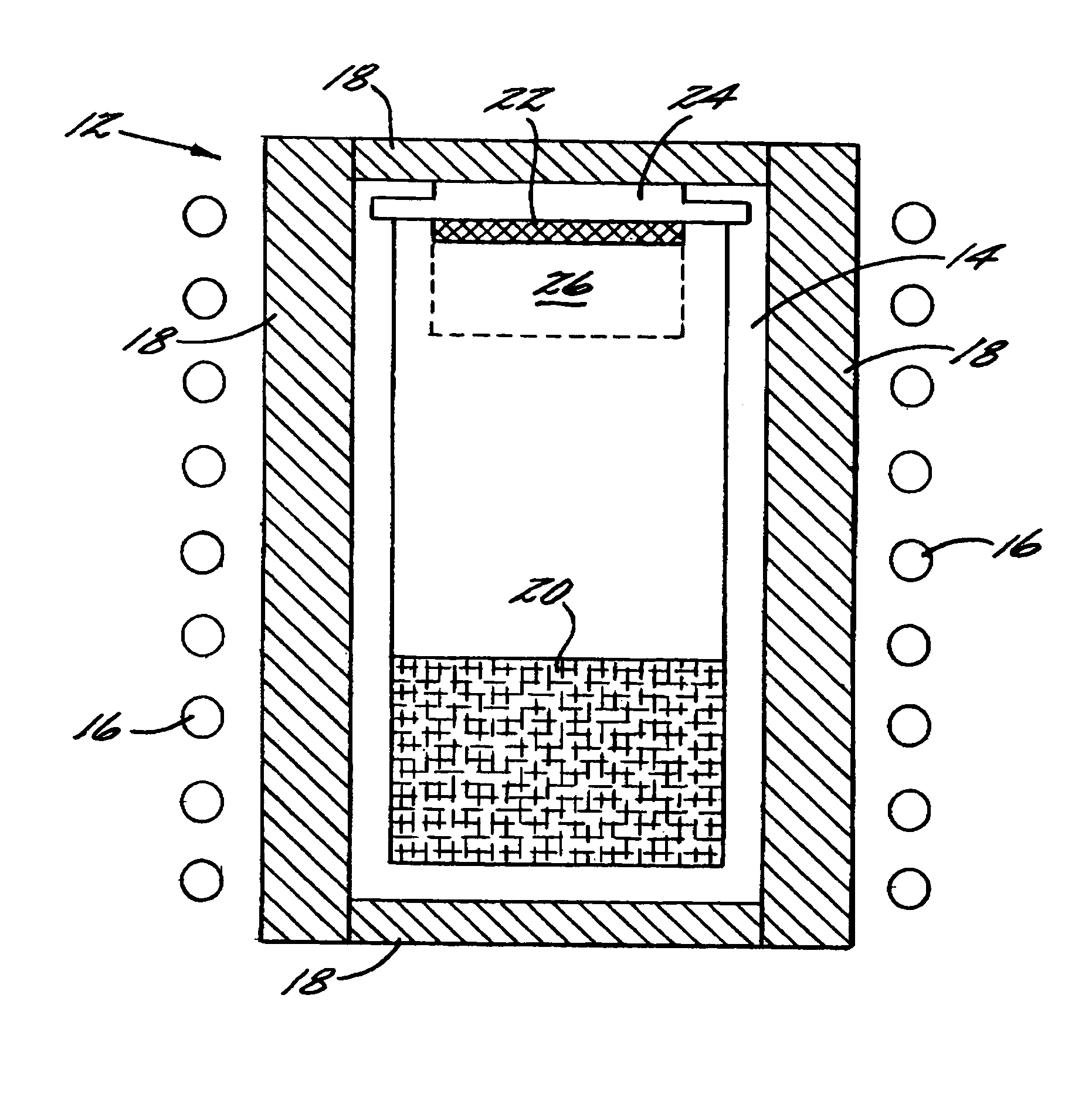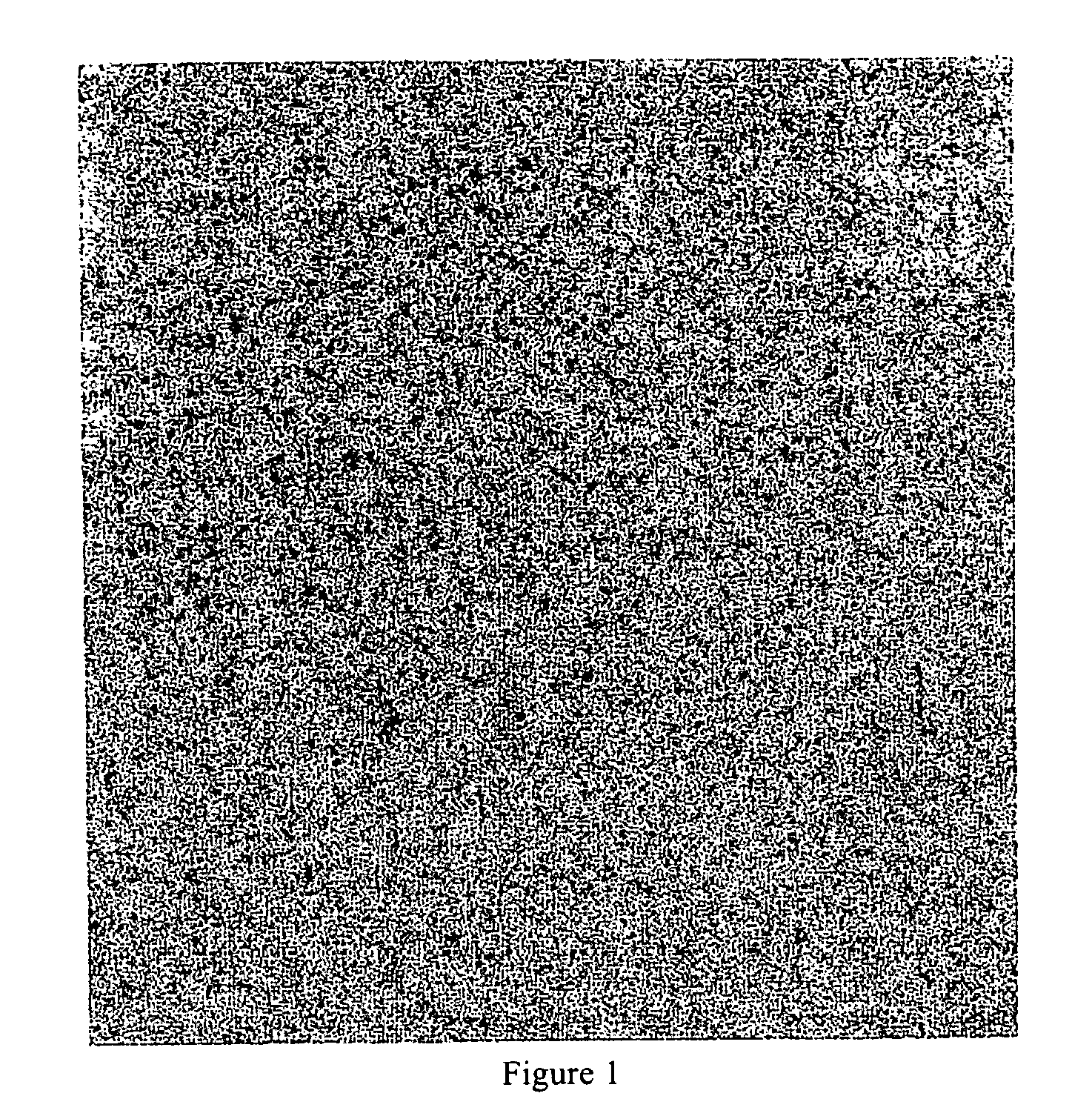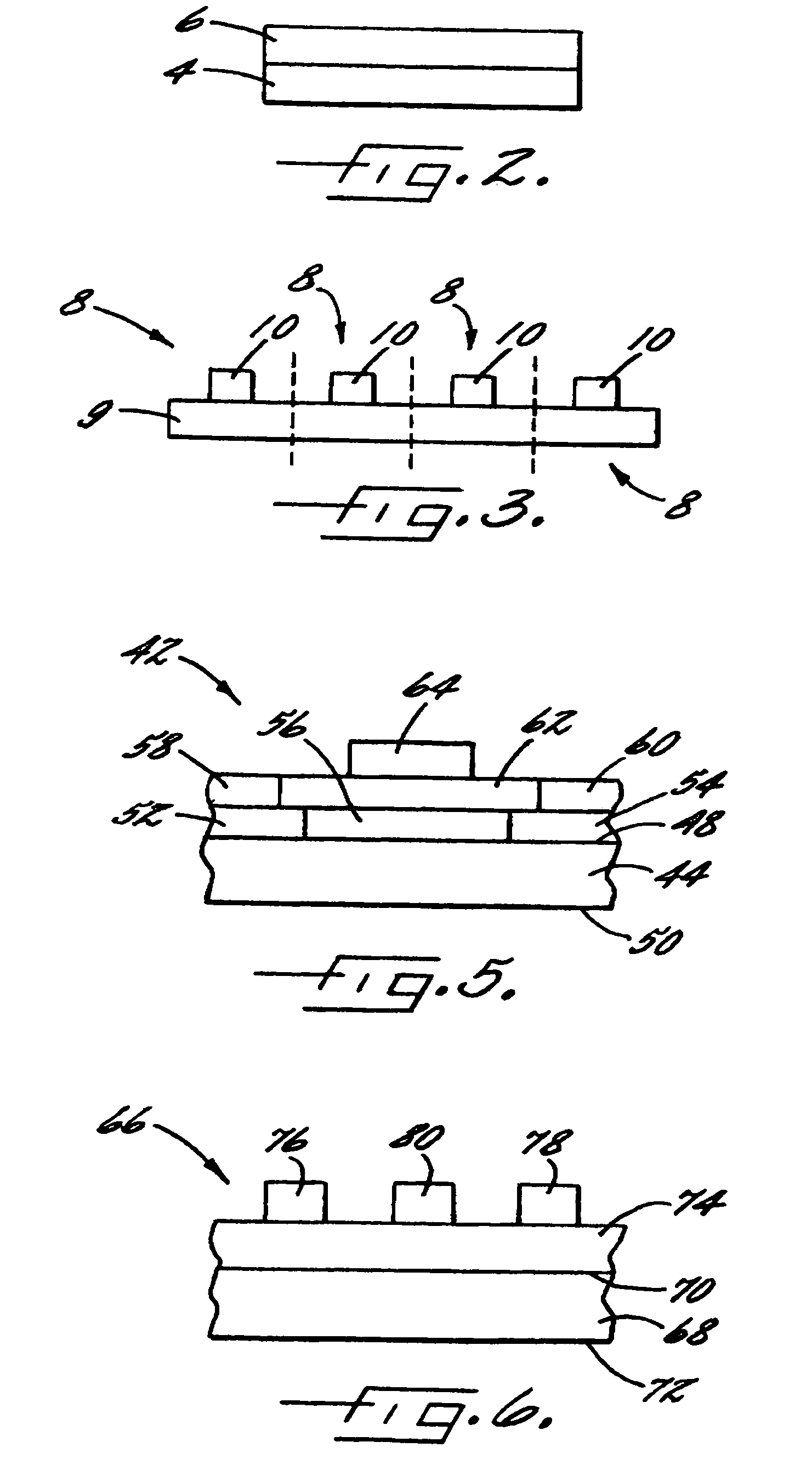Low basal plane dislocation bulk grown SiC wafers
a technology of bulk grown sic wafers and basal plane dislocation, which is applied in the field of low defect silicon carbide wafers, can solve the problems of limiting the performance characteristics of devices made on the substrate, difficult to eliminate relatively high defect concentrations, and constant reduction of structural defects in silicon carbide bulk crystals, etc., and achieves the effect of high quality
- Summary
- Abstract
- Description
- Claims
- Application Information
AI Technical Summary
Benefits of technology
Problems solved by technology
Method used
Image
Examples
Embodiment Construction
[0028]The present invention relates to high quality silicon carbide wafers. In particular, the present invention incorporates several techniques for improving the growth of such wafers using seeded sublimation.
[0029]In the following description basal plane dislocation densities will be specified as the area density for a 4 degree off-axis wafer. There is, however, an explicit assumption that a direct relationship exists between this area measurement and the total basal plane line length in the material.
[0030]In one aspect, the present invention is a high quality single crystal wafer of SiC having a diameter of at least about 3 inches (75 mm) and at least one continuous square inch (6.25 cm2) of surface area having a basal plane dislocation density of less than about 500 cm−2, more preferably less than about 75 cm−2, and most preferably less than about 50 cm−2. The polytype of the single crystal SiC is preferably 3C, 4H, 6H, 2H, or 15R.
[0031]In considering the proportional dimensions...
PUM
| Property | Measurement | Unit |
|---|---|---|
| diameter | aaaaa | aaaaa |
| diameters | aaaaa | aaaaa |
| diameters | aaaaa | aaaaa |
Abstract
Description
Claims
Application Information
 Login to View More
Login to View More - R&D
- Intellectual Property
- Life Sciences
- Materials
- Tech Scout
- Unparalleled Data Quality
- Higher Quality Content
- 60% Fewer Hallucinations
Browse by: Latest US Patents, China's latest patents, Technical Efficacy Thesaurus, Application Domain, Technology Topic, Popular Technical Reports.
© 2025 PatSnap. All rights reserved.Legal|Privacy policy|Modern Slavery Act Transparency Statement|Sitemap|About US| Contact US: help@patsnap.com



